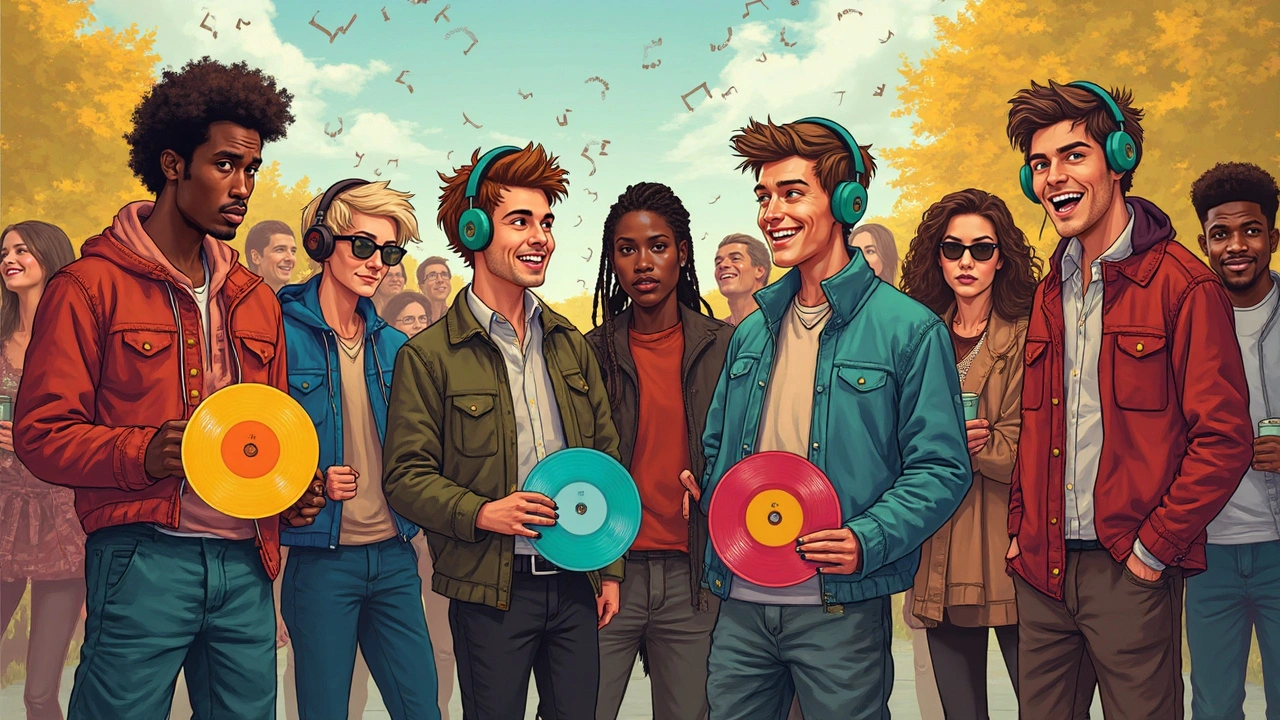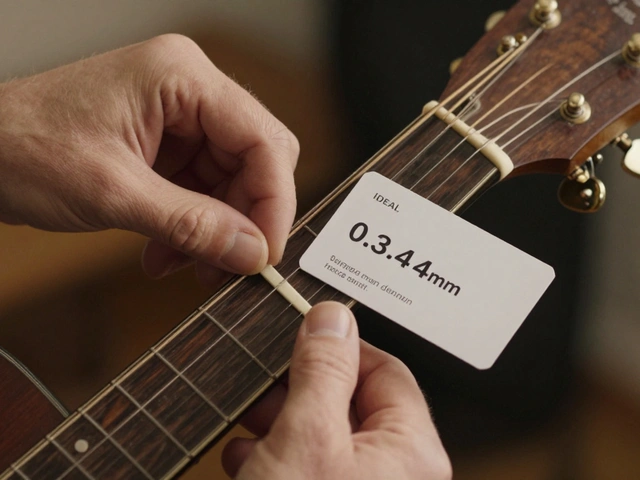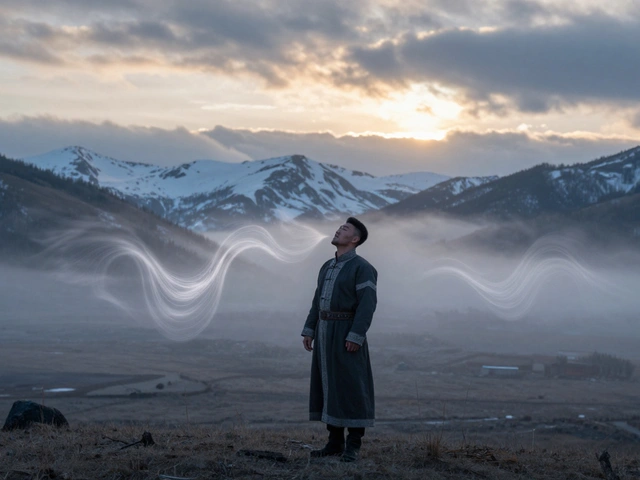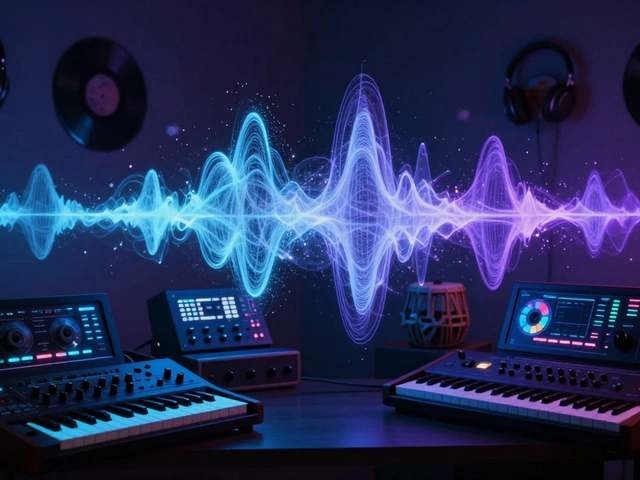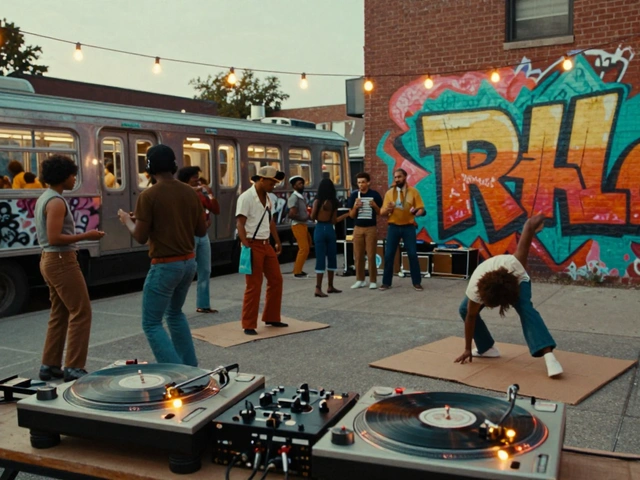Ever wonder why there are so many flavors of music that sound “almost, but not quite” like something else? That’s the world of subgenres. You’ve probably noticed it’s not enough to just say “I like rock” or “I listen to hip hop”—there’s indie rock, trap, emo rap, synthpop, and about a million others. What’s the point of all these sub-categories?
Subgenres do two big things: they help us talk about music in a way that makes sense, and they help listeners find exactly what suits their mood. Finding the right subgenre is like finding the perfect pair of jeans—you don’t quit just because straight leg exists; you go skinny, baggy, distressed, or whatever fits you best. The same goes for playlists.
Knowing a bit about subgenres also helps you escape music ruts. Why? Because if you dig classic punk, you might love melodic hardcore. If you’re into ‘90s R&B, you might really vibe with UK garage. It’s about tweaking the formula just enough to keep things interesting. Ready to get into how these categories get made, broken, and mashed up again? You might spot your next obsession before it hits the charts.
- Why Subgenres Happen in the First Place
- Genres That Keep Splitting: Some Real Examples
- How Genre Hybrids Take Over
- From Niche to Mainstream: The Crossover Moment
- Tips for Finding and Exploring New Subgenres
- Where Subgenres Might Go Next
Why Subgenres Happen in the First Place
The world of music subgenres explodes so fast it can be tough to keep up. What sparks all these offshoots? A lot of the time, it comes down to people craving something fresh while hanging onto what they already like. Music fans want new sounds, but they’re picky about what feels right. Artists pick up on this, and scenes split off as new ideas pop up or as different groups of people put their own spin on things.
Sometimes, a technical side makes the split obvious. Technology changed everything: when bedroom producers got access to computers in the late ’90s, suddenly electronic music shot out subgenres like dubstep, trance, and lo-fi hip hop. New gear tends to inspire new sounds, so you’ll often see a burst of subgenres whenever music tech gets a boost.
Culture plays a big part, too. Think about punk: it reflected anger at the system, but what about people who wanted something less hostile? That’s how pop punk and emo emerged. These new sounds fit different moods and messages while keeping one foot in the original scene.
Sometimes it’s about geography. UK grime grew out of London’s garage and hip-hop scenes. Chicago house, Detroit techno, and New Orleans bounce all sound different because local scenes added their own twists. Check out this quick snapshot of subgenre birthplaces and years they showed up:
| Subgenre | Birthplace | Rough Year |
|---|---|---|
| Grime | London, UK | 2002 |
| Trap | Atlanta, USA | 2003 |
| Lo-fi Hip Hop | Internet/Global | 2012 |
| Emo Rap | Florida, USA | 2015 |
Labels and streaming services have pushed this even further. When Spotify creates hyper-specific playlists, it gets people into micro-scenes. Suddenly, "chillwave summer nights" is a thing, and artists pile in. Subgenres seem like a mess sometimes, but really, they’re just proof that people like their music tailored—and that there’s always someone ready to break the mold.
Genres That Keep Splitting: Some Real Examples
If you’ve ever jumped into a new music scene, you know how fast genres can branch out. It’s not just marketing or buzzwords—musicians love tinkering with what came before, and listeners want to put a name on every vibe. Some genres refuse to sit still; they keep dividing and making new directions.
Take rock, for example. It started with basic roots in the ‘50s, but by the ‘70s, you already had punk, glam, and metal. From there, punk led to post-punk, hardcore, emo, pop-punk, and even folk punk. Here’s how fast these splits happen sometimes:
| Original Genre | Major Subgenres | First Wave (Year) | Latest Popular Splits |
|---|---|---|---|
| Rock | Punk, Metal, Indie, Prog | 1950s-1970s | Bedroom Pop, Shoegaze |
| Hip Hop | East Coast, West Coast, Trap, Drill | 1980s-2000s | Emo Rap, Hyperpop |
| Electronic | House, Techno, Drum & Bass, Trance | 1980s-1990s | Future Bass, Lo-fi Hip Hop |
| Metal | Thrash, Death, Black, Doom | 1980s-1990s | Metalcore, Djent |
Hip hop really ran wild with this. In the ‘90s it was location-based: East Coast or West Coast. Today, people talk about music subgenres like mumble rap, trap, or drill—even though they mix together on the charts. Top artists like Lil Uzi Vert (emo rap/trap) and Pop Smoke (drill) show how fast a new flavor can break out and get huge.
Don’t forget electronic music. House and techno only sound kind of similar now because of how many side roads they’ve taken—UK garage, dubstep, future bass, or lo-fi hip hop (great for chill study playlists). Lo-fi hip hop alone spawned a wave of YouTube streams with millions of listeners. That’s power for a supposed “niche.”
Whenever fans or artists feel hemmed in, they build a new branch. Sometimes it’s about place (like Chicago’s footwork or UK grime), sometimes it’s mood, sometimes it’s even internet memes. The more internet access grows, the faster these splits keep going, and it’s unlikely to slow down.
How Genre Hybrids Take Over
The coolest thing about music subgenres is how they blend. Seriously, lots of the most streamed tracks today mix at least two genres. Take Lil Nas X’s “Old Town Road”—it broke the internet because nobody could decide if it was country, rap, or just something totally new. When a song feels familiar but isn’t pinned down, it grabs attention in a big way.
The lines used to be clearer. Hip hop was hip hop, rock was rock, and country was country. Then came artists like Linkin Park mashing rock and rap together, or Billie Eilish blurring electropop and indie vibes with a sprinkle of trap production. Not only does this keep music sounding fresh, but it also widens the audience big time. Global charts these days are stacked with genre-mixing tracks. For example, in 2023, almost 70% of Spotify’s Global Top 50 featured songs that mixed at least two different genres.
| Year | Hybrid Songs on Billboard Hot 100 (%) |
|---|---|
| 2010 | 40% |
| 2015 | 55% |
| 2023 | 68% |
Genre hybrids also let artists skip gatekeeping. Instead of waiting for approval from radio stations or label heads who want “classic pop,” musicians upload straight to TikTok or SoundCloud, where the only rule is: does it catch a vibe? People are more likely to hit play if a song brings unexpected sounds together—like Doja Cat blending funk, hip hop, and bubblegum pop, or Post Malone sitting halfway between hip hop, rock, and R&B.
If you want to spot the next big hybrid, don’t just look for who’s trending. Check out what smaller artists are doing online. New subgenres often start in tiny corners of the internet, like SoundCloud rap or hyperpop, and blow up once someone nails a catchy formula.
- Listen to music from several playlists across different genres.
- Watch for genre-blending artists on platforms like TikTok and YouTube.
- Check collabs—when artists cross genre lines, a new sound might be brewing.
The bottom line? Genre hybrids aren’t just a trend—they’re how new subgenres are born and how pop culture keeps itself on its toes.
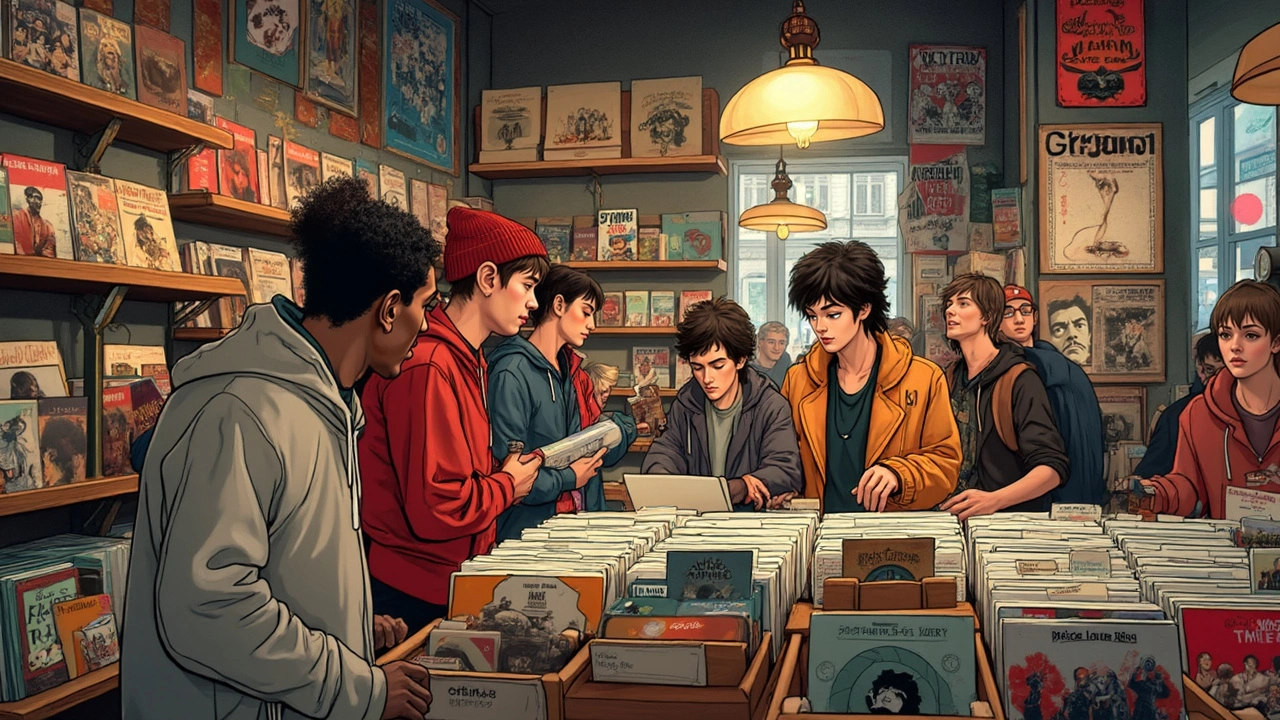
From Niche to Mainstream: The Crossover Moment
The moment a subgenre jumps from an insider thing to a top-40 sound feels wild. Sometimes it happens overnight, and you wake up to everyone talking about a style you thought was your secret.
Take trap music. For years, it was a local Atlanta scene—mainstream hip hop ignored it. Suddenly, big names like Drake and Migos brought trap elements into pop songs. By 2017, the music subgenres that started out in small clubs were running the Billboard charts. Then look at reggaeton—used to be niche in Puerto Rico and Panama. After “Despacito” (remix version with Justin Bieber in 2017) exploded, global pop stars rushed to collab with reggaeton artists. Latin rhythms are now everywhere—it’s hard to find a summer playlist without one.
What really pushes these moments? Usually, it’s either a super catchy song or a viral video. TikTok made hyperpop go from weird SoundCloud uploads to festival stages. Rosalía put flamenco fusion in the spotlight with eye-popping music videos. Once the mainstream grabs on, other artists follow, and radio programmers jump in. Labels throw money at anyone who has the “sound.”
Want some proof? Check out this quick table showing how long it took a couple of subgenres to move from niche to chart domination:
| Subgenre | Niche Scene Year | First Mainstream Hit | Mainstream Peak | Years to Break Out |
|---|---|---|---|---|
| Trap | 2003 (T.I. - "Trap Muzik") | 2012 (Future - "Turn On The Lights") | 2017 (Migos - "Bad and Boujee") | ~14 |
| Reggaeton | 1990s club scene | 2004 (Daddy Yankee - "Gasolina") | 2017 (Luis Fonsi - "Despacito") | ~15-25 |
| Hyperpop | 2013 (SOPHIE releases) | 2020 (100 gecs TikTok hits) | 2021 (multiple artists at Lollapalooza) | ~7-8 |
The move from niche to mainstream usually means the sound gets changed, sometimes watered down for bigger crowds. If you want to catch the next wave before everyone else, keep an eye on underground playlists, TikTok, or local radio in unexpected places. Those are the spots where tomorrow's hits start brewing.
Tips for Finding and Exploring New Subgenres
Tired of your usual playlists? There’s a massive world out there if you’re willing to look beyond the big genres. Digging into music subgenres isn’t as overwhelming as it sounds, and it’s actually one of the fastest ways to refresh your listening habits.
First, use streaming platforms smarter. Spotify’s “Fans Also Like” and Apple Music’s “Similar Artists” aren’t just random suggestions—they’re based on real listening patterns and can jump you from pop-punk to hyperpop, or folk to freak-folk, in seconds. If you type in a subgenre like “UK drill” or “phonk,” you’ll usually get a curated playlist right away. Tidal and YouTube Music also have subgenre-focused editorial playlists, sometimes built by actual musicians.
If you’re a reader, sites like AllMusic or RateYourMusic break down genres and subgenres with detailed explanations and album lists so you can learn what sets dream pop apart from shoegaze. Wikipedia, funnily enough, has huge lists of subgenres that can be fun to scroll for inspiration.
- Start by choosing a genre you already like. Google "subgenres of [your favorite genre]" to see which names pop up.
- Pick a subgenre you're curious about and find a starter playlist. Listen, notice what feels new, and see which artists catch your ear.
- Don’t overlook Reddit threads—forums like r/genre or r/letstalkmusic have loads of recommendations from real fans.
- Follow record labels or small event promoters on social media (especially Instagram and TikTok). These accounts often post about fresh releases in very specific sounds.
- Look up major music festivals or indie club nights—they often build their lineups around up-and-coming subgenres long before they break mainstream.
Pay attention to hashtags, too. Searching something like “#trapmetal” or “#amapiano” on Instagram or TikTok will drop you into communities where fans share new tracks and artists. This hands-on snooping is how some of the biggest acts (like Billie Eilish with bedroom pop) gained traction before anyone knew the name.
Don’t get too hung up on labels. They change fast, and some artists intentionally blur the lines. The real goal? Use subgenres as shortcuts, not rulebooks, and see what surprises you.
Where Subgenres Might Go Next
Music is morphing faster than ever, and subgenres aren’t slowing down. If anything, the boundary lines keep getting blurrier as new sounds pop up daily online. Experts say TikTok and YouTube are now some of the main engines for breaking music into new micro-genres. A 2024 report from Spotify showed that almost 60% of Gen Z and Millennials discover new subgenres mostly through these platforms, not radio.
You can already see wild hybrids of styles taking off. Think hyperpop (which sounds like a video game stuck on fast-forward with pop hooks and rap verses). Then there’s country-trap, drill-bossa nova, and even shoegaze rap. People are less hung up on “rules” and more about the vibe. As music critic Lindsay Zoladz put it,
“Nobody’s waiting around to have their style blessed by an old-school label anymore. Popular micro-genres are just what catch fire fastest.”
So where’s this all heading? Here’s what’s likely to happen based on trends right now:
- Fans will keep mashing genres together, making new ones literally overnight—especially as more people learn music production from their laptops.
- Algorithms will get even better at spotting “just-born” subgenres before anyone's given them a name. So you might get recommended something you didn’t even know existed yet.
- Live shows and online events will start to serve ultra-niche scenes, with lineups even more specialized than today's underground fests.
- Labels and big streaming services will chase viral music subgenres to keep subscribers hooked, probably hyping micro-genres that last only a few months.
Cultural and tech shifts have a big impact here. For example, the last decade saw a boom in genre hybrids as affordable software, like Ableton and GarageBand, made it simple for anyone to experiment. According to MIDiA Research, DIY artists made up over 30% of new tracks released in 2024:
| Year | % New Tracks by DIY Artists |
|---|---|
| 2022 | 25% |
| 2023 | 28% |
| 2024 | 31% |
What’s the lesson for anyone curious? Stay open, and don’t let old genre labels box you in. Next week’s playlist-defining subgenre might get invented by a teenager with a busted laptop and a wild idea. That’s music now—and it’s only getting weirder (and more fun) from here.

